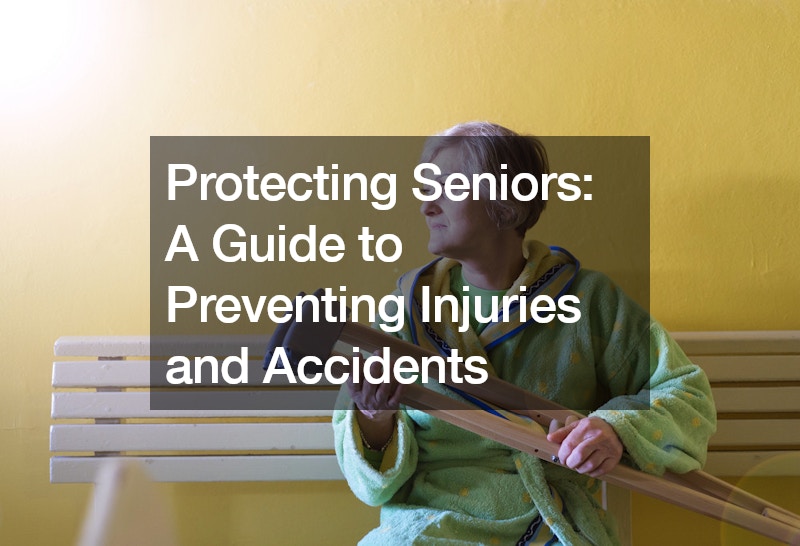As our loved ones age, ensuring their safety becomes a paramount concern. Seniors are often more susceptible to injuries and accidents, with falls being a leading cause of concern. According to data from the Centers for Disease Control and Prevention (CDC), seniors over the age of 65 experience a fall approximately every second in the United States. The consequences of these falls can be severe, often leading to debilitating injuries and, in some cases, even fatalities. However, with the right precautions and preventative measures, many of these accidents can be avoided, allowing seniors to age gracefully and safely in their homes.
Understanding the Risks
One of the first steps in protecting seniors from injuries and accidents is understanding the risks they face. Falls are particularly common among older adults, with factors such as decreased balance, vision problems, and muscle weakness increasing their susceptibility. In fact, falls are the leading cause of injury-related deaths among seniors, highlighting the importance of implementing strategies to prevent them.
Regional Variations
It’s also important to recognize that the risk of falls and accidents can vary depending on location. Regional variations in fall rates and accidental deaths shed light on the diverse challenges faced by seniors across different states. For example, while some states may have higher rates of transportation-related accidents among seniors, others may see a greater prevalence of falls due to icy conditions during the winter months. Understanding these regional variations can help tailor preventative measures to specific needs and challenges.
Home Safety Measures
Fortunately, there are several practical steps that seniors and their caregivers can take to minimize the risk of injuries and accidents. One of the most important measures is ensuring that the home environment is safe and conducive to mobility.
Keeping the living space tidy and organized is essential for preventing tripping hazards. Seniors should prioritize furniture function over form, ensuring that items are arranged to allow for clear pathways and easy navigation. Regular maintenance tasks such as replacing light bulbs when necessary and hiding exposed wires can also reduce the risk of accidents. Furthermore, securing rugs with non-slip pads or adhesive strips can prevent them from shifting or bunching up, reducing the likelihood of slips and falls. Additionally, installing grab bars and handrails in key areas such as bathrooms and stairwells is crucial.
Medication Management
Another crucial aspect of senior safety is proper medication management. Seniors often take multiple medications, increasing the risk of adverse drug interactions or accidental overdoses. It’s essential to keep medications organized, labeled, and stored securely, and to dispose of expired or unused medications promptly. Using a daily pill organizer can help seniors stay on track with their medication regimen and avoid potential errors.
Utilizing in home care services can also assist seniors in managing their medications, ensuring they take the correct dosage at the appropriate times. Additionally, they can assist in monitoring for any potential side effects or adverse reactions, as well as providing reminders for medication refills or doctor’s appointments. Ultimately, they promote the overall health and well-being of seniors while reducing the risk of medication-related incidents.
Pet Safety
Pets can bring joy and companionship to seniors, but they can also pose a risk if not properly trained or managed. Large or excitable pets may inadvertently cause falls or injuries, particularly during walks or playtime. It’s important for seniors to ensure that their pets are trained and well-behaved or to enlist the help of a professional trainer if needed. Additionally, seniors should be cautious when walking their pets, using a sturdy leash and harness to maintain control.
Maintaining Physical Health
Maintaining physical health through regular exercise and activity is key to preventing injuries and accidents among seniors. Simple activities such as walking, stretching, and light strength training can help improve balance, flexibility, and overall mobility, reducing the risk of falls and injuries.
In addition to exercise, it’s important for seniors to prioritize their overall health through proper nutrition and hydration. A well-balanced diet rich in fruits, vegetables, lean proteins, and whole grains can provide essential nutrients to support bone health, muscle strength, and immune function. Adequate hydration is equally vital, as dehydration can exacerbate muscle weakness and fatigue, increasing the risk of accidents. Encouraging seniors to drink plenty of water throughout the day and consume hydrating foods such as soups, fruits, and vegetables can help maintain optimal hydration levels. By paying attention to their dietary habits and ensuring adequate nourishment, seniors can enhance their physical well-being and reduce the likelihood of injuries and accidents.
In conclusion, protecting seniors from injuries and accidents requires a multifaceted approach that addresses both environmental and personal factors. By understanding the risks, implementing preventative measures, and promoting healthy lifestyles, we can help seniors age safely and gracefully in their own homes. Whether it’s removing hazards, managing medications, or staying active, every effort counts in ensuring the well-being and safety of our aging loved ones.
.

